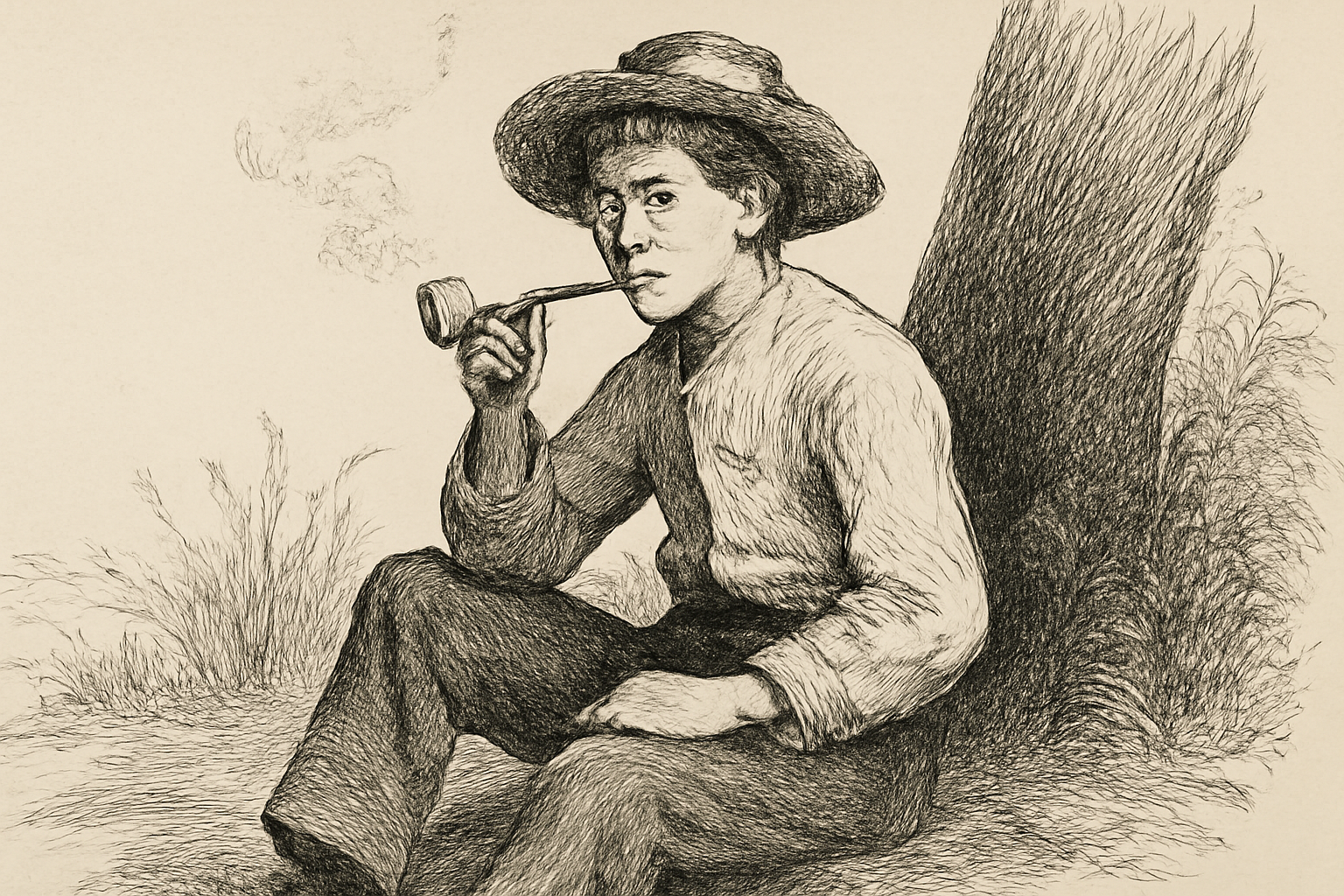When you think of The Adventures of Huckleberry Finn, one image often comes to mind: Huck Finn with his beloved corncob pipe. This symbol, along with the vivid illustrations that accompany the novel, has become a lasting representation of Mark Twain’s masterpiece. In this article, we explore the Google Images Huckleberry Finn illustrations corncob pipe, the cultural significance of these depictions, and how they’ve shaped our perception of the iconic literary character.
The Significance of the Corncob Pipe in Huck Finn Illustrations
In Mark Twain’s 1884 novel, Huckleberry Finn, the character of Huck is often seen with a corncob pipe in hand, a simple yet powerful symbol of his rebellious, free-spirited nature. The corncob pipe has become an emblem of Huck’s adventurous life, connecting him to the rural life on the Mississippi River. The pipe, often featured in the novel’s illustrations, conveys much more than just a smoking accessory; it symbolizes Huck’s independence and connection to nature.
Depictions of Huck Finn in Classic Illustrations
In the early editions of Huckleberry Finn, illustrations played a significant role in helping readers visualize the story’s world. Google Images Huckleberry Finn illustrations are filled with iconic drawings of Huck, many featuring him holding his corncob pipe. These illustrations have been passed down through generations, enhancing the connection readers have with the text. Artists like E.W. Kemble helped bring the characters and settings of the book to life with detailed illustrations that captured the essence of Huck’s personality and the time period in which the story is set.
The visual medium allowed artists to emphasize Huck’s personality traits, such as his courage, wit, and independence. The corncob pipe often appears in these depictions as a symbol of his unpretentious lifestyle, one that rejects societal norms in favor of a life of freedom and adventure.
How Google Images Has Preserved These Illustrations
Thanks to the digital age, Google Images has made it easy to access these timeless illustrations. A simple search for “Huckleberry Finn corncob pipe” will reveal a treasure trove of historical images that bring the novel’s characters to life. These digital archives have preserved the works of the original illustrators and made them available to people worldwide. Whether you are an educator, a student, or a fan of the novel, Google Images is a valuable resource for exploring the artistic interpretations of Twain’s characters.
Moreover, these images are not only a way to revisit the past but also provide modern audiences with a chance to engage with the art through different lenses. Many modern-day digital artists have also created their own renditions of Huck with the corncob pipe, contributing to the ongoing legacy of the novel.
The Evolution of Huckleberry Finn’s Image Over Time
As the years passed, Huck’s appearance and the significance of the corncob pipe have evolved in various ways. The initial depictions were highly influenced by the cultural context of the late 19th century. However, as Huckleberry Finn gained more readers across different generations, artists began to interpret Huck differently. In some modern renditions, Huck’s outfit and mannerisms might reflect more contemporary fashion or an updated version of the pipe.
Even though the corncob pipe remained a staple, different styles and artistic techniques began to emerge. Some artists preferred more detailed, realistic portrayals, while others embraced a more abstract or whimsical style. Regardless of the medium or artistic approach, the corncob pipe remained a constant, symbolizing Huck’s roots and his unyielding desire for freedom.
Why the Corncob Pipe Remains Relevant Today
In a world where technology and culture continuously evolve, the corncob pipe continues to hold symbolic value. Today, the pipe is often used in pop culture and visual media to represent the spirit of adventure, independence, and resistance to societal expectations—traits that Huck embodies. For instance, in modern illustrations or animated adaptations, the corncob pipe often serves as a link to Huck’s past, grounding the character in tradition while allowing him to transcend time.
The presence of the corncob pipe in Google Images Huckleberry Finn illustrations is a reminder that some symbols never lose their power. While the world around us may change, the core themes of Huck Finn’s journey—freedom, rebellion, and friendship—remain timeless. It is through these illustrations that we continue to connect with the novel, keeping the spirit of Huck alive.
Conclusion
The Google Images Huckleberry Finn illustrations corncob pipe offer more than just a glimpse into the past; they serve as a powerful connection to the enduring themes of Mark Twain’s work. The corncob pipe remains a symbol of Huck’s identity and the broader messages of freedom, individuality, and rebellion. Whether viewed through the lens of historical artwork or modern interpretations, these images continue to inspire new generations of readers and art enthusiasts alike.
By searching for Huckleberry Finn illustrations with a corncob pipe, you’re not only rediscovering a piece of American literary history, but you’re also witnessing the evolution of a character who, much like the pipe he so often carries, continues to withstand the test of time.












Leave a Reply